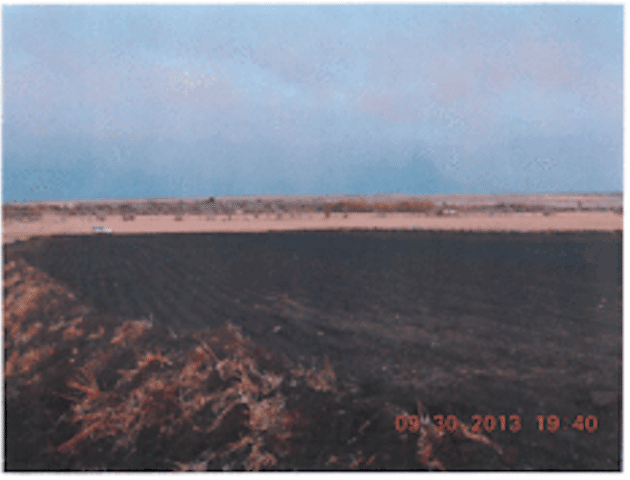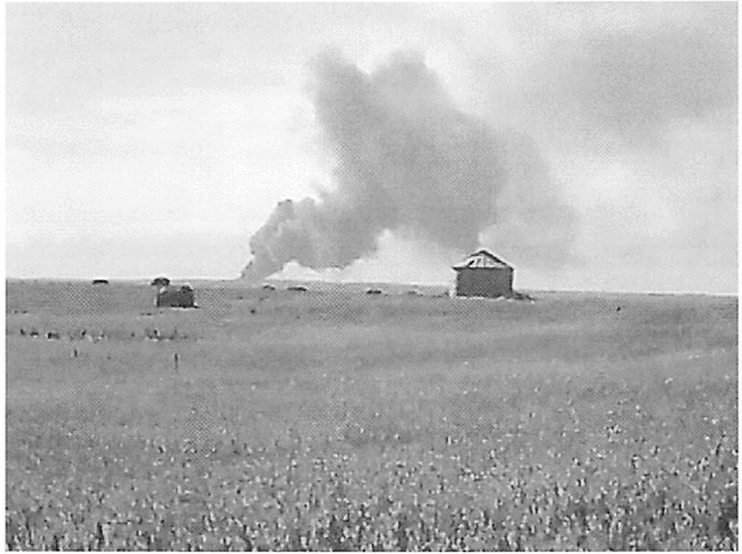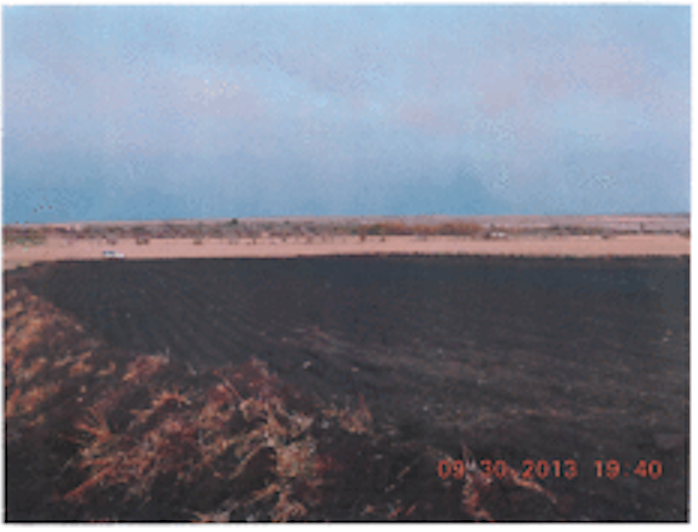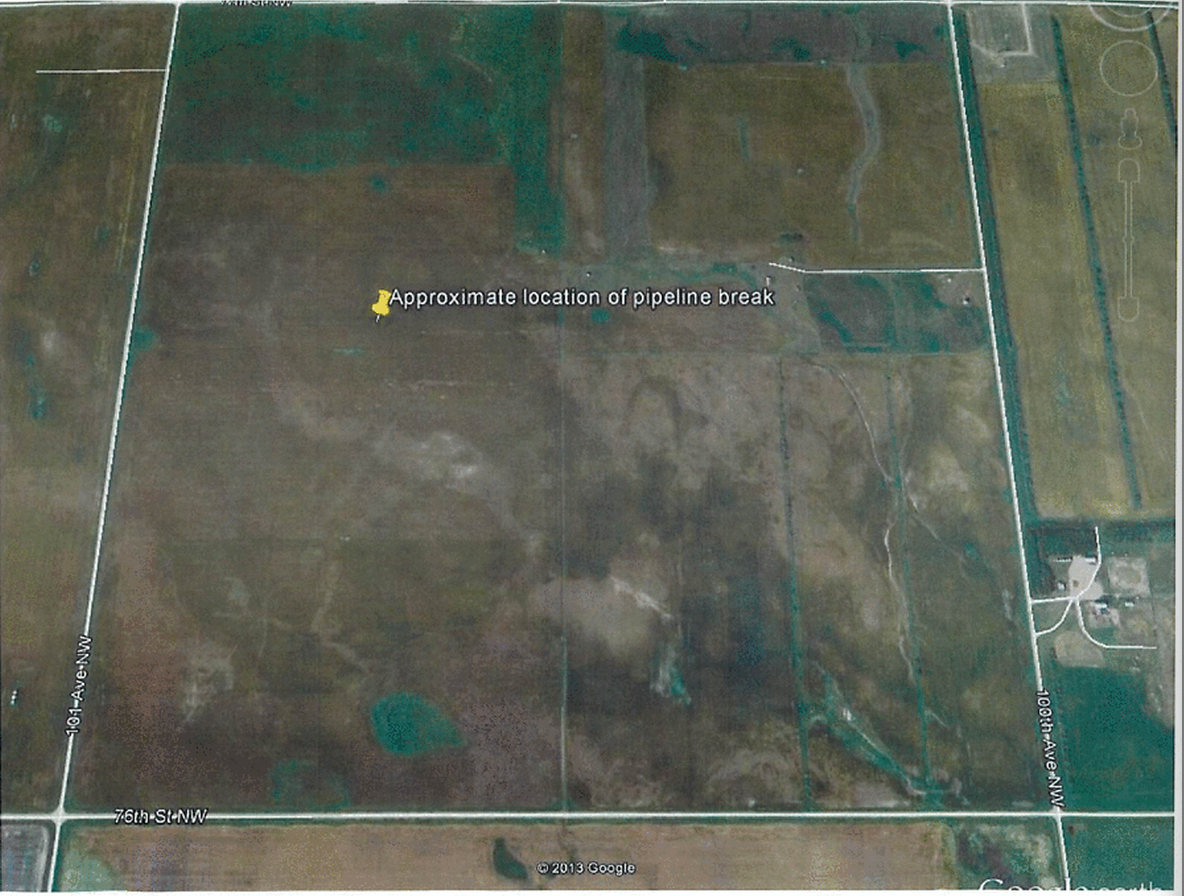A month after over 865,200 gallons of oil spilled from Tesoro Logistics’ 6-inch pipeline near Tioga, North Dakota, the cause of the leak is still largely unknown to anyone but Tesoro. The pipeline resumed operations today.
Carrying oil obtained via hydraulic fracturing (“fracking”), the controversial horizontal drilling method used to capture oil and gas found embedded in shale rock basins worldwide, the Bakken Shale pipeline spill on September 29 was the largest fracked oil spill in U.S. history. Oil spill experts say the spill may be even bigger than originally estimated.
Yet few details of what caused the spill – and how to prevent it from happening again – have arisen in the month since it occurred.
The U.S. Department of Transportation’s Pipeline and Hazardous Materials Safety Administration (PHMSA) believes a lightning strike may have created the quarter inch hole in the pipeline, leading to the spill.
PHMSA says it will carry out a rigorous investigation into the cause of the spill, but allowed the restart after Tesoro agreed to the agency’s safety order mandating aerial monitoring of the pipeline over the next three days during the restart and then weekly for the next year, along with 20 other things.
The safety order also mandates Tesoro provide a documented updated within six months indicating how it enhanced its control room monitoring, instructs Tesoro to finish the final mechanical and metallurgical testing report of the failed pipe within 30 days and dictates that within “90 days complet[ion of] a root cause failure analysis for the Line that contains a detailed timeline of events.”
Documents obtained by Greenpeace USA under North Dakota’s Open Records Statute show the oil has settled over 12 feet below the ground layer of the soil. The oil that settled on the surface was burned off.
“At 10-12 feet below surface, there is a extensive clay layer that underlies the entire hill top,” Kris Roberts, Environmental Response Team Leader for the North Department of Health’s Division of Water Quality, explained in an October 3 field report.
“Putting it to Bed for the Winter”
In an interview with DeSmogBlog, Roberts said studies to test the impacts of the massive amounts of oil on the area’s soil are forthcoming.
“There will be a lot of testing done after the process of cleaning it up,” he said. “For now, it’s kind of a moot point when you’ve got product moving through the soil, it’s kind of screwed up. So, there will be sampling that happens as we work toward different options toward remediating the contamination.”
Rather than rush to clean up the soil now, though, the North Dakota Department of Health plans on “putting it to bed for the winter” and finishing up in the spring, Roberts said.
“We’ll continue to recover any free oil, but essentially because winter is days away if not already there, they’re basically just putting it back to bed, ensuring it’s properly contained and monitored,” he said.
“They will hopefully get some natural remediation over the winter below the frost zone when the indigenous bacteria start flourishing, that’ll probably help a little bit cleaning up. But for the most part, everything is pretty much on hold and active remediation is going to be on hold until next spring.”
Photos of Spill Site Revealed for First Time
Below are some of the photos provided to Greenpeace USA as part of its Open Records request.
They include a photo of the oil burn, which Tesoro did the day after the spill upon getting permission to do so from the North Dakota Department of Health; as well as aerial and on-the-ground photos of the scene of the spill site.
Stay tuned for DeSmogBlog’s continuing coverage on North Dakota’s massive Bakken Shale fracked oil spill in the days and weeks ahead.
A photo of the in situ burning of oil from a distance; Photo Credit: Greenpeace USA
Over 865,000 Gallons of Fracked Oil in the Soil; Photo Credit: Greenpeace USA
A birds-eye view of the 865,000 gallon spill of fracked oil in Tioga, NDGreenpeace USA
Subscribe to our newsletter
Stay up to date with DeSmog news and alerts









